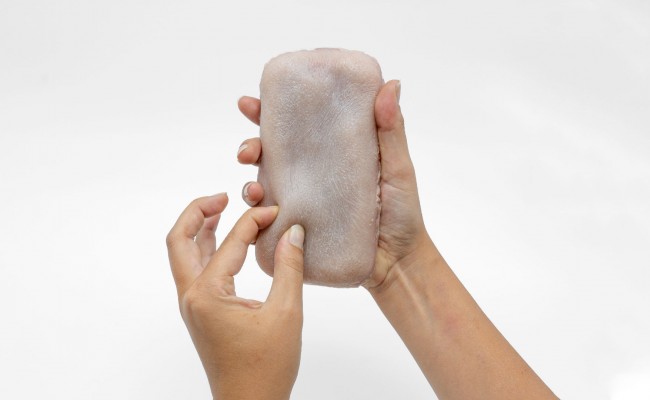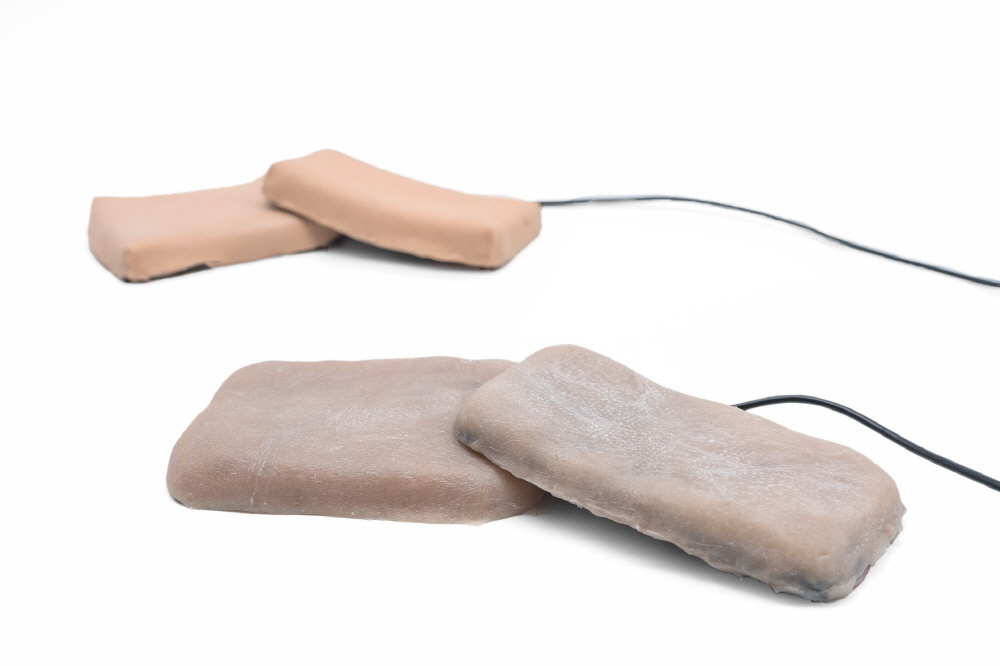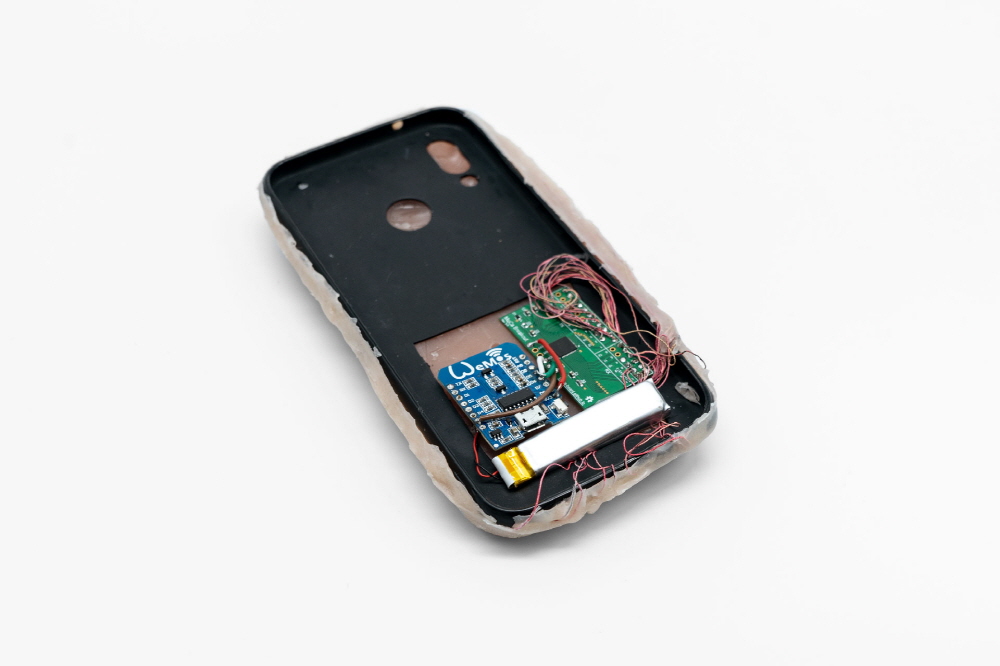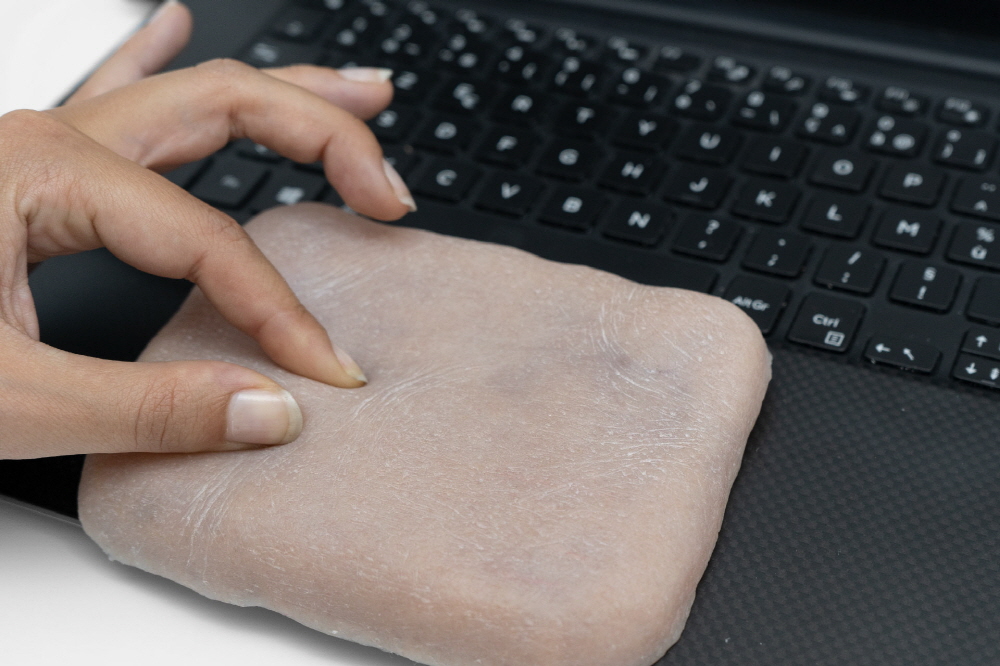
HCI researcher and interaction designer Marc Teyssier has developed a Skin-On Interface to enhance the functionality of digital devices using artificial skin.
The skin setting interface using artificial skin is a project conducted by Mark Tessie at BIG (Bristol Interaction Group), a research institute located in Bristol, UK. This project aims to create a perfect human interface by adding sensitive and interactive input devices like human skin to existing devices.
The skin interface can be installed as a smartphone case or used in place of a laptop trackpad. When used as a trackpad, it can accurately detect movements like flipping sideways, tapping, and even pinching artificial skin. If installed on a smartphone, it can detect movements that mimic the artificial skin on the back. Even if it is installed instead of a trackpad, the image displayed on the display is rotated 9 if pinched, or the volume can be adjusted by pinching it by installing it on a smartphone.


In addition, you can properly recognize whether you have a smartphone in both hands and display the UI in an easy location by pressing with your thumb. If the skin interface is mounted on the robot, humans can communicate with each other.
On the back of the skin interface, a board is installed to transmit the motion detected by the sensor to a smartphone or laptop. Also, the skin interface itself is open source hardware. The research team is said to be studying a method of reproducing human skin in terms of visual and tactile sensations to make artificial skin used for skin interface. While referring to the related literature, we use silicone to mimic skin deformation characteristics and investigate how visual elements and tactile factors such as texture and thickness affect user experience and actual perception.
There is a sensor layer under the artificial skin of the skin interface, and through this, imitation or pinching gestures similar to human skin can be detected even on the artificial skin. The process of manufacturing the skin interface is quite simple: first the surface tactile layer, or artificial skin, is created. Artificial skin uses a silicone and beige pigment called Dragon Skin that has the same touch.

Next, place the electrode on the back of the artificial skin. Then, add the subcutaneous tissue (Ecoflex GEL) to the electrode. The thickness of the subcutaneous tissue depends on the thickness of the skin interface. In the case of the research team, it is said that it was made about 10mm thick. After that, the skin interface is completed by connecting the electrode between the artificial skin and the subcutaneous tissue to the hardware detection platform and molding it. Related information can be found here .


















Add comment